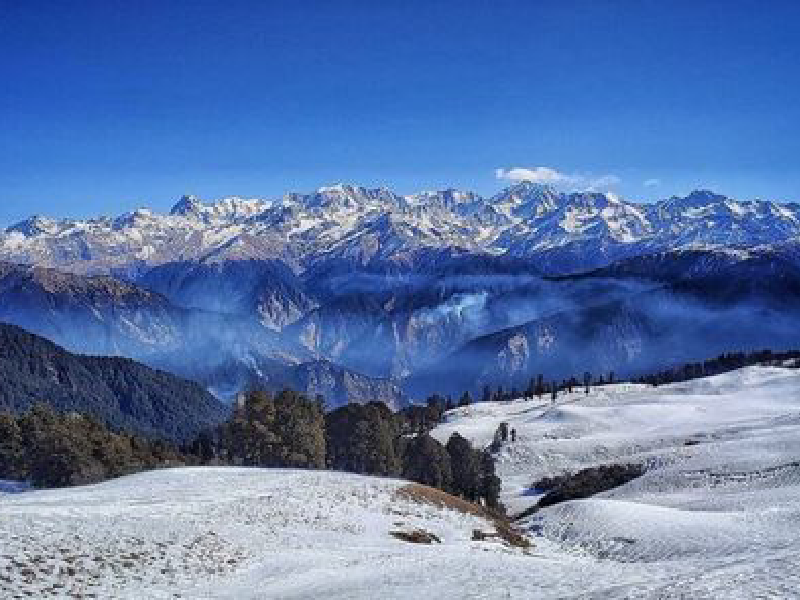Conquering the Himalayan Giants: A Guide to High Altitude Treks
The Himalayas, a majestic mountain range stretching across several countries, are a paradise for adventure seekers and nature enthusiasts. Trekking through these towering peaks offers a unique blend of physical challenge, breathtaking scenery, and spiritual tranquility. Let’s explore some of the most popular treks in the Himalayas, including details on the best time to visit, duration, and difficulty.
Chopta Tungnath Trek
The Chopta Tungnath Trek is a relatively easy trek that offers stunning views of the Himalayas. Starting from the picturesque village of Chopta, the trek leads to the ancient Tungnath Temple, one of the five Panch Kedar temples. The trek takes you through lush meadows, dense forests, and offers panoramic views of the surrounding peaks.
Altitude: 3,475 m (11,400 ft)
Best time to visit: April to November
Duration: 5-6 days
Brahmatal Trek

The Brahmatal Trek is a moderate-level trek that takes you to the beautiful Brahmatal Lake, nestled amidst the Himalayas. The trek starts from the Lohajung and offers breathtaking views of the surrounding peaks, including the majestic Mt. Trishul. The Brahmatal Lake, surrounded by snow-capped mountains, is a sight to behold.
Altitude: 3,733 m (12,250 ft)
Best time to visit: December to February
Duration: 5-6 days
Laka Glacier Trek
The Laka Glacier Trek is a challenging trek that takes you to the Laka Glacier, one of the largest glaciers in the Himalayas. The trek starts from the Mcleodganj and offers stunning views of the Himalayas’ surrounding peaks, snowy landscapes, and lush valleys. The trek is physically demanding but rewards you with breathtaking views of the glacier and the surrounding landscape.
Altitude: 3,200 meters (10,500 feet)
Best time to visit: November to March
Duration: 4-5 days
Kuari Pass Trek
The Kuari Pass Trek is a moderate-level trek that offers panoramic views of the Himalayas. The trek starts from the village of Joshimath and takes you through dense forests, meadows, and offers stunning views of the surrounding peaks, including Mt. Nanda Devi and Mt. Kamet. The Kuari Pass, the highest point of the trek, offers breathtaking views of the Himalayas.
Altitude: 12,516 ft (3,814 m)
Best time to visit: April to June, September to November
Duration: 4-5 days
Kedarkantha Trek
The Kedarkantha Trek is a popular trek that offers stunning views of the Himalayas. The trek starts from the village of Sankri and takes you through dense forests, meadows, and offers breathtaking views of the surrounding peaks, including Mt. Bandarpoonch and Mt. Kedarnath. The summit of Kedarkantha offers panoramic views of the Himalayas.
Altitude: 12,500 ft (3,800 m)
Best time to visit: December to March
Duration: 5-6 days
Hampta Pass Trek
The Hampta Pass Trek is a challenging trek that takes you through the Kullu Valley in Himachal Pradesh. The trek starts from the village of Hampta and offers stunning views of the surrounding peaks, including Mt. Hanuman Tibba and Mt. Deo Tibba. The Hampta Pass, the highest point of the trek, offers panoramic views of the Himalayas.
Altitude: 4,270 m( 14,055 ft)
Best time to visit: June to September
Duration: 5-6 days
Har Ki Dun Trek
The Har Ki Dun Trek is a popular trek that offers stunning views of the Himalayas. The trek starts from the village of Sankari and takes you through lush meadows, dense forests, and offers breathtaking views of the surrounding peaks, including Mt. Bandarpoonch and Mt. Black Ridge. The Har Ki Dun Valley, a beautiful meadow surrounded by mountains, is a must-visit.
Altitude: 12,000 ft (3,566 m)
Best time to visit: May to June, September to November
Duration: 6-7 days
Tips and Tricks for High-Altitude Trekking
High-altitude trekking can be a thrilling adventure, but it’s important to be prepared. Here are some tips and tricks to help you have a safe and enjoyable experience:
- Acclimatize slowly: Gradually increase your altitude to give your body time to adjust to the reduced oxygen levels.
- Stay hydrated: Drink plenty of water, even if you don’t feel thirsty, to prevent dehydration.
- Eat regularly: Fuel your body with nutritious food to maintain energy levels.
- Pack appropriately: Bring warm clothing, layers, waterproof gear, and sturdy hiking boots.
- Protect yourself from the sun: Wear sunscreen, a hat, and sunglasses to protect your skin.
- Listen to your body: If you’re feeling unwell or experiencing symptoms of altitude sickness, rest and seek medical attention if necessary.
- Hire a guide: Consider hiring a local guide who knows the terrain and can provide valuable insights.
- Respect the environment: Leave no trace and follow local regulations to protect the natural beauty of the Himalayas.
- Enjoy the journey: Remember to appreciate the breathtaking scenery and the unique experience of high-altitude trekking.
These are just a few of the many high-altitude treks that the Himalayas have to offer. Each trek offers a unique experience, from the breathtaking scenery to the challenging terrain. Whether you’re an experienced trekker or a beginner, there’s a trek out there for you. So pack your bags, lace up your boots, and get ready to conquer the Himalayan giants! Read more- relxnn.com.









